Polecamy:
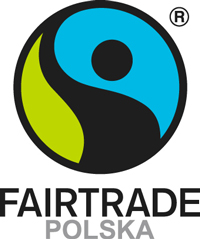
|
|
|
 |
||||||||
|
|
|
|
|
|
|
|
|
|||
|
|
|
|
|
|
|
|
||||
 |
 |
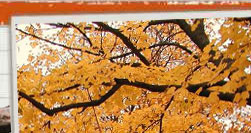 |
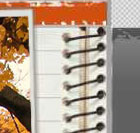 |
|||||||
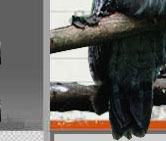 |
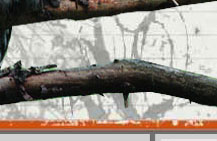 |
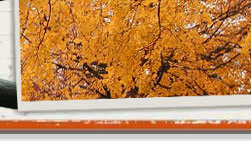 |
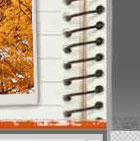 |
|||||||
| |
|
|
|
|
||||||
Successes and defeats of Polish ecology in European Union - summation As of 1 May 2004, Poland is a member of the European Union. The EU is no longer 'them,' it is now 'us.' The affairs of rural Poland are as much a part of the European Union as are the affairs of Brussels. The situation of Polish ecology was not magically transformed on that day or even in the few months that followed. The pre-accession processes had been patiently plodding along for years, with huge investments of time, money and effort. It was a completely different sort of transformation from the wild changes after the sudden fall of communism at the turn of the decade. Although it is too early to judge the effects of accession on Poland's environment, there are many signs already to be seen. What sort of future is waiting for environmental organisations in Poland after accession? It will certainly be much like their efforts before accession: hard work, constant vigilance and a need to keep learning in a rapidly changing world. The EU is not a static entity that countries are absorbed into. It is an ongoing process created by partners. May 2004 was also the first time that the EU welcomed so many new partners at once. At the same time as EU accession is changing how Polish environmental organisations operate, those same Polish organisations are contributing to EU priorities and policies for the future. Agriculture and provincial development have been one of the most controversial aspects of Poland's accession to the EU. However, because many of the developments in organic farming in Poland began much earlier, the actual moment of accession was not particularly eventful. In 1998, there were 410 organic farms in Poland. The first significant legislation covering organic farming separately was the 'Act on Organic Farming of 16 March 2001.' By 2003, the number of organic farms had risen to 2,286 and covered 49,928 ha. Although this growth has been dramatic, it still only counts for 0.11% of all agricultural land in Poland. The two most important positive changes to organic farming in Poland after EU accession are: 1) increased stability of laws and regulations, and 2) the introduction of new programmes designed to support the development of organic farming. At the same time, development has been hampered by programmes that were not launched on time, scarcity of information, the looming danger that the CAP will soon be trimmed (especially in the second pillar for rural development), and the rapid increase in costs of agricultural products after accession. The Rural Development Plan (RDP) is a document that has been several years in the making. It was finally approved by the Council of Ministers in March of 2004 and the European Union confirmed it in September of 2004. One of the key elements of the plan is the Agri-Environment Programme (AEP) with a budget of ?350m for the years 2004-2006. This highly pro-environmental programme is subdivided into seven packages: 1) organic farming, 2) sustainable farming, 3)maintaining semi-natural grasslands, 4) maintaining extensive pasture, 5) protection of soil and water, 6) creation of buffer zones (greenbelts between agricultural fields and water runoff), and 7) preservation of local breeds of animals. Subsidies may be received by organic farmers who produce food for their own consumption as well as those would produce with the intention of placing their products on the market. By the end of November 2004, 3,594 applications were submitted by organic farmers to the AEP. Unfortunately, no payments have been disbursed yet, thanks to bureaucratic difficulties at the Polish Agency for Restructurisation and Modernisation of Agriculture (ARiMR). Nonetheless, the large number of applications and the obvious enthusiasm for organic farming in Poland has been one of the pleasant surprises after accession. Still, there remain many voices calling for caution, especially for traditional methods of farming. Seven months after accession, Poland's agricultural sector on the whole remains highly traditional. Family farms of less than 8 ha. make up 68% of the total. They are typically mixed and self-sufficient with surpluses being sold locally. EU encouragement to 'improvement' in terms of hygiene, economic regulations and consumer standards can also be synonymous with the destruction of traditional structures of agriculture. Another concern that stands opposed to dubious progress is the move to protect local, regional and tradition food products. Poland woke up to the need to protect traditional foods at a European level relatively late in the game. Before accession, the Czech Republic had 68 regional products registered at a national level, whereas Poland only had 5, all of which are related cheeses from the mountainous southern border: oscypek, żętyca, bundz, bryndza and redykołka. None of these products are currently on any EU list of protected products. The Association of Sheep and Goat Herders of Nowy Targ made a bid to register one of them, oscypek, as a protected regional product, but they were blocked by their neighbours in the Limanów township who also lay claim to ownership. If Poland is successful in resolving such quarrels and developing the competence to register its many regional specialties at a European level, there is good reason to believe that these traditional foodstuffs will continue to be enjoyed at home and abroad. Accession to the European Union has also opened the door for Genetically
Modified Organisms (GMOs) on the Polish market. At the moment that
Poland joined the EU, 16 GMO products had already been accepted for use
in food or feed products in the EU. Two additional products, a variety
of sweet corn (Bt 11) and a variety of maize (NK 603), were accepted shortly
thereafter, on 19 May and 26 October respectively. A third product, a
variety of rapeseed (GT 73) was not accepted in a vote on 16 June in which
Poland argued against acceptance on the grounds that the introduction
of this variety could give its producer, Monsanto, a monopolistic position
on the market. Poland has also opposed the import of a variety of feed
maize from the same producer (MON 863) in a case that has not yet (as
of December 2004) been finally resolved. Food products containing GMOs are covered in the 'Act on health conditions
of foodstuffs and nutrition of 11 May 2001.' This places approval of food
products in the hands of the Chief Sanitary Inspectorate. At this time,
the registry of the Inspectorate shows 58 decisions allowing 104 products
containing GMOs on the Polish market, mostly soy proteins and enzymes. 'Act on Genetically Modified Organisms' has been submitted to the Polish parliament (Sejm) for consideration. This draft bill would allow that products which have been placed on the market in the EU in other member countries would not need additional authorisation from Polish authorities. It would also remove the requirement of keeping a register of GMOs. In practice, this would mean that any GMO product produced in the territory of the EU could be introduced into Poland without any need to inform the public (other than appropriate labelling) and without any Polish control. Although Polish legislation that has existed up to this point has been relatively restrictive on paper, it has largely been a dead letter. Few Polish producers bother to label products that contain GMOs, inspections of products on the market are rare, and the punishments for infringement are ineffective. Although specialised laboratories equipped to perform tests exist, the costs of analysis are too high to be introduced on a wide scale. It has been estimated that 60 to 70% of the processed foods on the Polish market contain soy, most of which is imported from the US where 80% of soy cultivation is made up of transgenetic varieties. The number of opponents to genetically modified foods in Poland is growing. In 1998, the Polish Academy of Sciences found that 70% of Polish citizens did not have any concerns about genetically modified foods, but by 2003, that number had fallen to between 30 and 40%. Furthermore, a CBOS survey in 2003 found that while 90% of respondents had heard of GMOs, over 80% of them did not understand the information that they had received. One method of shutting unwanted genetically modified foods out of the Polish market is the establishment of voluntary GMO-free zones. From July of 2004 onwards, such zones have been declared by farmer's groups in Stryszów, Jelenia Góra, Toruń, Chmielnik and Łapanów as well as the regions (województwa) of Małopolska and Podkarpackie. Poland's Agrotourism industry is also trying to come to terms with new health requirements. Although the bureaucracy and taxation burdens for agrotourism are low enough to tempt farmers to supplement their incomes, they are also required to keep all the standards of Good Hygiene Practice (GHP), Good Manufacturing Practice (GMP) and Hazard Analysis and the Critical Control Point System (HACCP). Most farmers are not against health standards. However, a tightening of the rules may result in some farmers dropping their agrotourism activities. For many Polish citizens, their vote for EU accession in 2003 was motivated by a desire to see their quality of life improve. Part of Poland's baggage from its communist past was a deteriorated environment which had a direct effect on the health of its citizens and EU membership might reasonably be hope to improve the situation. In 2003, the 'European Environment and Health Strategy' promised: 1) to reduce the disease burden caused by environmental factors in the EU, with special emphasis on vulnerable groups in society like children, 2) to identify and to prevent new health threats caused by environmental factors, such as endocrine disrupting effects, and 3) to strengthen EU capacity for policymaking in this area. At the same time, some observers have doubted whether the EU is delivering on its health promises to Poland. Many of the new improvements have also come with new health concerns. The free movement of goods has also brought new worries about the potential dangers of GMOs in the environment and in our bodies. The increasing number of cars on the road, of which many are used vehicles recently imported from the West, raises concerns about emissions. The farmers' good fortune in selling their hogs for slaughter and export to new markets, also brings with it the spectre of factory farming and organic waste in runoff waters. Access to funding is one of the keys to protecting the environment and
supporting sustainable development. Poland's accession to the EU and the
new funds made available have created both new opportunities and new challenges
for Polish environmental initiatives. Project preparation is a prerequisite to achieving success. The overarching plan for EU expenditure in Poland is the National Development Plan (NDP). Therefore, it is essential for environmental NGOs to work hard to keep environmental issue at the heart of the NDP and in each of its component Sectoral Operational Programmes. The first NDP for the years 2002-2004 did not take into consideration the concerns of Polish NGOs and consequently did not envisage many environmental protection projects. This has been corrected in the NDP for 2007-2013 in which NGOs have been involved in the project planning stage, giving good reason to believe that it will feature strong environmental representation. NGOs participate in the management of EU funds primarily through representation on Steering and Monitoring Committees. After accession, the number of such committees has grown, as has the number of NGO representatives sitting on committees. New legal support comes from Poland's 'Act on the NDP' which stipulates that a third of the members of such committees should come from NGOs. Committee members have an increased awareness of their role as representatives for environmental concerns and this has led to an improvement in the quality and efficiency of communication from the committees to the NGOs. NGOs also find themselves as potential beneficiaries of a new spectrum of EU financial instruments. One of the greatest difficulties has proved to be the NGOs' ability to implement post-accession projects. Before accession, small grants were easy to win and the smaller projects associated with them were easier to implement. After accession, larger grants are now preferred, involving more paperwork, greater financial oversight and the need to raise larger sums in matching funds. NGOs also need to show more sophistication in identifying sources of funding, especially when the words "environmental protection" are not clearly part of the fund's title. In each of these three areas, the key to success lies in effective communication.
Four Polish environmental groups (the Institute of Environmental Economics,
the Institute for Sustainable Development, the Polish Green Network, and
WWF Poland) have joined together to form a Coalition of NGOs for European
Funds to help share and spread information about the new opportunities
that are available. 1) Integration (including ensuring appropriate use of Structural Funds
and the Cohesion Fund within existing EU environmental legislation), The EU's environmental policy is 'horizontal' in that all investment
programmes and projects may only receive EU funds if they are in harmony
with environmental protection policies. Opportunities for pro-environmental
activities may, therefore, not only be found in the LIFE programme which
is dedicated to that purpose, but also in the Cohesion Fund, Structural
Funds and Community Initiative Programmes. The LIFE III programme is an EU financial instrument entirely dedicated to environmental protection. The programme had a budget of ?640m in 2000-2004 and ?317m for 2005-2006. It is divided into three areas. 'LIFE-Nature' (47% of the total budget) supports programmes which protect flora and fauna, in particular the Natura 2000 Network. 'LIFE-Environment' (47% of the total budget) aims to introduce innovative environmental solutions in areas such as water-table management, waste management and recycling. 'LIFE-Third Countries' (6% of the budget) supports environmental activities in non-member neighbouring countries and is not currently active in Poland. Only two Polish projects have been approved for LIFE programme funds
at this time. In the 'LIFE- Environment' area, the 'Environmental Partnership'
Foundation in Krakow successfully received financing for a project to
increase environmental awareness for small and medium sized enterprises.
The ultimate goal of the project is to create an internet-based "Environmental
Manager." Less obviously dedicated to environmental issues, the Cohesion Fund also offers opportunities for NGOs. This fund continues the work of the ISPA (Instrument for Structural Policies for Pre-Accession) in trying to narrow the gap between Poland and the established members of the EU in environmental standards as well as infrastructure and technical capabilities in this area. The ?3.7bn available in this area is evenly divided between environmental and transport fields. Structural Funds may also be used towards environmental protection. Up to a total of ?7.6bn in Structural Funds are available to Poland until the end of 2006. Experience in other EU member states shows that this potential can only be exploited for environmental concerns when one knows how to use it. There are four Structural Funds available to Poland: 1) ESF (the European Social Fund) offering ?4.7bn, EAGGF (the European Agricultural Guidance and Guarantee Fund) offering ?1.7bn, ERDF (the European Regional Development Fund) offering ?1.1bn, and FIFG (the Financial Instrument for Fisheries Guidance) offering ?200m. As part of Poland's National Development Plan for 2004-2006, these funds have been divided into Sectoral Operational Funds. The seven SOPs are: 1) Improvement of Competitiveness of Enterprise, 2) Human Resources Development, 3) Restructuring and Modernisation of the Food Sector and Rural Development, 4) Fisheries, 5) Transport, 6) Integrated Regional Operational Programme, and 7) Technical Assistance Operational Programme. Although this division seems to narrowly define where environmental action is possible, creative applications can turn other sectors towards sustainable development goals, for example, the creation of 'Green' workplaces. Of the Community Initiative Programmes, Poland is currently engaged in one (Leader+) as a pilot programme and fully participating in two others, EQUAL and INTERREG III. The EQUAL programme is designed to fight discrimination in the workplace and has been turned to environmental protection in Poland through projects like the "Black Sheep" programme which gives prison inmates work experience while protecting local habitats and fauna. INTERREG aims to encourage co-operation across regional and national boundaries, with a priority for sustainable regional development and regional environmental protection. Poland may also make use of funds from countries associated with the EU, such as the European Economic Area (EEA) Financial Mechanism and the Norwegian Financial Mechanism. In 2004-2009, Poland will receive ?533.5m for programmes that include renewable sources of energy and public transportation systems. Overall, the new European funding opportunities are promising for environmental protection in Poland. Nonetheless, there are worries that these funds may also be used in ways which damage the environment, or they may be wastefully used or left unused. The problem is the lack of knowledge about the new opportunities, poor preparation for their proper use, and the continuing lack of public involvement. To overcome these obstacles, local governments and administrations will have to learn from the experience of the stakeholders in the established members of the EU. On 3 December 2004, the Polish parliament (Sejm) signed the 'Act on Experimentation
on Animals' into law, ending months of deliberation. The main incentive
to change was to bring Polish law into line with EU norms, especially
EU directive 76/68/EEC, last updated in February 2003. An additional issue that faces Poland is the Via Baltica, a major international highway which, in some versions of its design, may pass dangerously close to endangered habitats. The ongoing debate over 'biofuels' such as those derived from rapeseed oil has been particularly lively in Poland with farmers planting additional rape in anticipation of new legislation, only to find the law struck down at the last minute by the Polish Constitutional Tribunal. Likewise, Poland as a recipient of used vehicles from elsewhere in the EU has to pay special attention to regulations governing the recycling of parts and materials from those vehicles. In keeping with Council Directive 1999/31/EC, Poland will also need to limit the total amount of waste discarded into landfills. Difficulties in meeting landfill and other waste disposal requirements are likely to associated with increased costs which will passed on to local governments and businesses. Many changes to Polish laws affecting environmental protection were already
made in 200-2002 in anticipation of EU accession. As of May 2004, these
laws now form a coherent whole which Polish businesses must understand
and work within. The IPPC (Integrated Pollution Prevention and Control)
Directive of 1996 requires more than 2000 of the largest Polish businesses
to regulate emissions. This now allows a regional governor (wojewoda)
to curtail or stop the activities of a business found to be in violation
of the established norms. Many firms are also participating in EMAS (the Eco-Management and Audit Scheme), a voluntary scheme to help businesses evaluate and manage their impact on the environment. The primary motivation for Polish firms to invest in EMAS certification is to improve their ability to compete on European markets. Many of the changes to laws affecting local self-government directly relate to environmental protection. The European Charter of Local Self-Government, suggests that, in keeping with European notions of subsidiarity, government should be run by the authorities closest to the citizens and matters should only move to higher levels when it is not possible or efficient to deal with them below. Local self-governments will now conduct their tenders according to EU standards, including announcing large procurements through the Office for Official Publications of the European Communities. There are also limits to financial aid that could potentially distort local markets. Although local self-governments are not required to plan local development strategies, many self-governments will find themselves doing so to maximise the effectiveness of environmental protection on the local level and to get the most out of structural funds. The benefits to be gained from the implementation of EU environmental policy depend on both leadership from the top down and support from the grassroots upwards. It is not always clear which of the changes have taken place because of EU accession, which have taken place at the same time (but unrelated to) EU accession, and which of the changes has taken place in spite of EU accession. Nonetheless, the mood among Polish NGOs concerned with environmental protection and sustainable development is one of guarded optimism. Scott Simpson Author is an American employed by The Centre for European Studies on Jagiellonian University in Krakow, Poland http://www.uj.edu.pl/index.en.html
|
||||||||||
|
|
|
|
|
|||||||
|
|
|
|
|
|
|
|
|
|
|
|